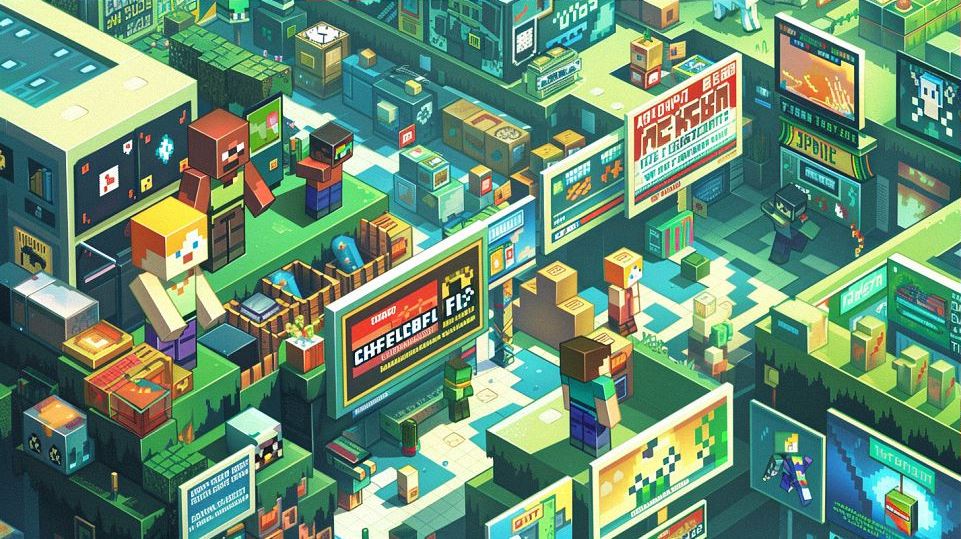How Much Did Minecraft Earn? Unveiling Revenue Milestones

Minecraft’s Financial Success
Initial Sales and Early Revenue
When Minecraft first hit the market in 2011, it quickly became a sensation. But how much did Minecraft earn in those early days? The numbers were astonishing. Within the first 24 hours of its alpha release, the game sold over 1,000 copies. By the time it reached its beta phase, it had already sold over 4 million copies. This was just the beginning of a financial juggernaut.
Contents
ToggleIn the early years, Minecraft’s revenue surged due to its unique gameplay and viral word-of-mouth marketing. By 2012, the game had surpassed 9 million sales, bringing in significant revenue for Mojang, the game’s developer. At approximately $26.95 per copy, these sales translated to around $243 million in just a few short years. The simplicity of its blocky design and the endless possibilities for creativity captured the imaginations of gamers worldwide, from children to adults.
Major Milestones in Earnings
Minecraft’s financial success didn’t stop with its initial sales. The game continued to break records and achieve major milestones. In 2014, a significant event occurred: Microsoft acquired Mojang and Minecraft for a staggering $2.5 billion. This acquisition marked a pivotal moment in Minecraft’s financial history, ensuring long-term support and development for the game.
Following the acquisition, Minecraft’s earnings continued to soar. By 2016, the game had sold over 100 million copies across all platforms, making it one of the best-selling video games of all time. This monumental milestone translated to billions in revenue, further cementing Minecraft’s status as a cultural phenomenon.
Another major milestone came in 2019, when Minecraft celebrated its 10th anniversary. By this time, the game had sold over 176 million copies. The launch of Minecraft Earth, an augmented reality version of the game, and the continued success of Minecraft Dungeons, a dungeon-crawling spinoff, added new revenue streams and kept the game fresh and engaging for both new and old players.
Current Financial Status
As of 2024, Minecraft’s financial success shows no signs of slowing down. The game has sold over 238 million copies, making it the best-selling video game in history. This continued success is bolstered by a thriving community, frequent updates, and the ever-expanding Minecraft Marketplace, where players can purchase skins, texture packs, and even custom worlds.
The Minecraft Marketplace alone contributes significantly to the game’s ongoing revenue. Players spend millions annually on in-game purchases, which adds a consistent and lucrative income stream for Microsoft. Furthermore, the game’s presence on multiple platforms, including consoles, PC, and mobile devices, ensures a broad and diverse player base.
Another key aspect of Minecraft’s current financial status is its merchandise and licensing deals. From toys and clothing to books and educational tools, Minecraft’s brand extends far beyond the game itself. These partnerships and products generate additional revenue and help maintain the game’s visibility in the public eye.
In summary, Minecraft’s financial journey from its humble beginnings to its current status as a global phenomenon is a testament to its enduring appeal and innovative gameplay. With millions of dedicated players and continuous updates, Minecraft’s financial success is poised to continue for many years to come.

Sources of Minecraft’s Revenue
Game Sales Across Different Platforms
Minecraft’s journey to financial success started with its impressive game sales across various platforms. When it was first released in 2011, it was available exclusively on PC. But it didn’t stay there for long. The game’s popularity soared, prompting Mojang to expand its availability. Soon, Minecraft was everywhere: consoles, mobile devices, and even VR platforms.
Why was this expansion so crucial? Each new platform brought in millions of additional sales. For example, when Minecraft was released on the Xbox 360 in 2012, it sold over 1 million copies in just the first five days. This trend continued as the game was launched on PlayStation, Nintendo Switch, and various mobile operating systems. Each platform’s launch resulted in a significant spike in sales, contributing to the overall revenue.
Moreover, each version of Minecraft was tailored to leverage the strengths of the platform it was on. The mobile version, known as Minecraft: Pocket Edition, provided a compact yet fully immersive experience for players on the go. Console editions included features like split-screen multiplayer, making it a hit among families and friends playing together. These tailored experiences ensured that players kept coming back, purchasing multiple versions of the game for different devices.
Minecraft Marketplace and Microtransactions
Another substantial revenue stream for Minecraft is the Minecraft Marketplace and microtransactions. Introduced in 2017, the Marketplace offers players the opportunity to buy custom content, such as skins, texture packs, and worlds created by the community. This move transformed Minecraft from a one-time purchase into a game with recurring revenue.
Players can buy Minecoins, the in-game currency, to purchase these items. The Marketplace not only provides a platform for creative players to monetize their work but also keeps the game fresh and exciting. There’s always something new to discover, from adventure maps to new skins that let players personalize their in-game avatars.
Microtransactions have become a significant part of Minecraft’s revenue model. According to reports, players spend millions annually on these in-game purchases. The continual addition of new content and features ensures a steady flow of revenue, as players are constantly looking for the latest and greatest ways to enhance their gameplay experience.
Merchandise and Licensing Deals
Minecraft’s financial success extends beyond the game itself through a wide array of merchandise and licensing deals. Walk into any toy store, and you’re likely to find a section dedicated to Minecraft. From action figures and LEGO sets to clothing and backpacks, Minecraft’s presence in the physical world is enormous.
These merchandise sales are not just about capitalizing on the game’s popularity, they also serve to reinforce brand loyalty among younger fans. A child with a Minecraft-themed backpack is constantly reminded of the game, keeping it at the forefront of their mind and sparking conversations with friends who might also be fans.
Additionally, Minecraft has struck numerous licensing deals that have expanded its reach even further. Educational products, for example, use the game to teach subjects like math and coding. Minecraft: Education Edition is a specialized version of the game used in classrooms worldwide, helping students learn while playing. These licensing deals bring in additional revenue and introduce Minecraft to new audiences who might not have discovered it otherwise.
In summary, Minecraft’s revenue sources are diverse and robust. From game sales across multiple platforms and the innovative Minecraft Marketplace to a vast array of merchandise and strategic licensing deals, each element plays a crucial role in the game’s ongoing financial success. These revenue streams not only sustain the game but also ensure its continual growth and relevance in an ever-evolving gaming landscape.

Factors Contributing to Minecraft’s Revenue
Popularity Among Different Age Groups
Minecraft’s widespread appeal across various age groups is a significant factor contributing to its revenue. From young children to adults, everyone seems to have fallen in love with the game’s charming blocky world. But what makes Minecraft so appealing to such a diverse audience?
One reason is its simplicity. The game’s basic premise of mining and crafting is easy to grasp, making it accessible to even the youngest players. At the same time, the game offers endless possibilities for creativity and exploration, allowing players of all ages to express themselves and build to their heart’s content.
Moreover, Minecraft’s multiplayer mode encourages social interaction and collaboration, fostering friendships and communities both online and offline. Parents appreciate the game’s educational value, as it promotes problem-solving skills, spatial awareness, and even basic coding concepts through its redstone mechanics.
The game’s ability to appeal to different age groups ensures a steady stream of new players entering the Minecraft universe, driving sales and revenue generation across platforms.
Influence of YouTube and Social Media
The rise of YouTube and social media has had a profound impact on Minecraft’s revenue. Countless videos showcasing gameplay, tutorials, and creative builds flood the internet, attracting millions of views and generating buzz around the game.
But how does this translate to revenue? It’s simple: exposure equals sales. When players see their favorite YouTubers or streamers enjoying Minecraft, they’re inspired to join in the fun themselves. This leads to an increase in game sales, especially among younger audiences who are heavily influenced by online content creators.
Furthermore, Minecraft’s integration with social media platforms allows players to share their creations with the world easily. Whether it’s a stunning architectural masterpiece or a hilarious meme-worthy moment, players love to show off their in-game achievements on platforms like Twitter, Instagram, and TikTok.
This viral word-of-mouth marketing not only attracts new players but also keeps existing players engaged and invested in the game. As a result, Minecraft continues to enjoy a steady stream of revenue from game sales, microtransactions, and merchandise purchases.
Impact of Updates and New Features
One of the key drivers of Minecraft’s revenue is its commitment to regular updates and the introduction of new features. Since its initial release, the game has undergone countless updates, each bringing fresh content, improvements, and optimizations.
But why are updates so crucial to Minecraft’s financial success? For starters, updates keep the game relevant. By introducing new biomes, mobs, blocks, and gameplay mechanics, Mojang ensures that players always have something new to discover and explore. This constant evolution of the game maintains player interest and encourages them to continue playing and purchasing additional content.
Moreover, updates often coincide with marketing campaigns and events, generating hype and excitement among the player community. From themed updates like the Nether Update to special seasonal events like Minecon, these initiatives drive engagement and drive sales across all aspects of the game, from core gameplay to merchandise.
In conclusion, Minecraft’s revenue is influenced by a combination of factors, including its popularity among different age groups, the influence of YouTube and social media, and the impact of regular updates and new features. Together, these elements create a perfect storm of success for the beloved block-building game, ensuring its continued dominance in the gaming industry.


